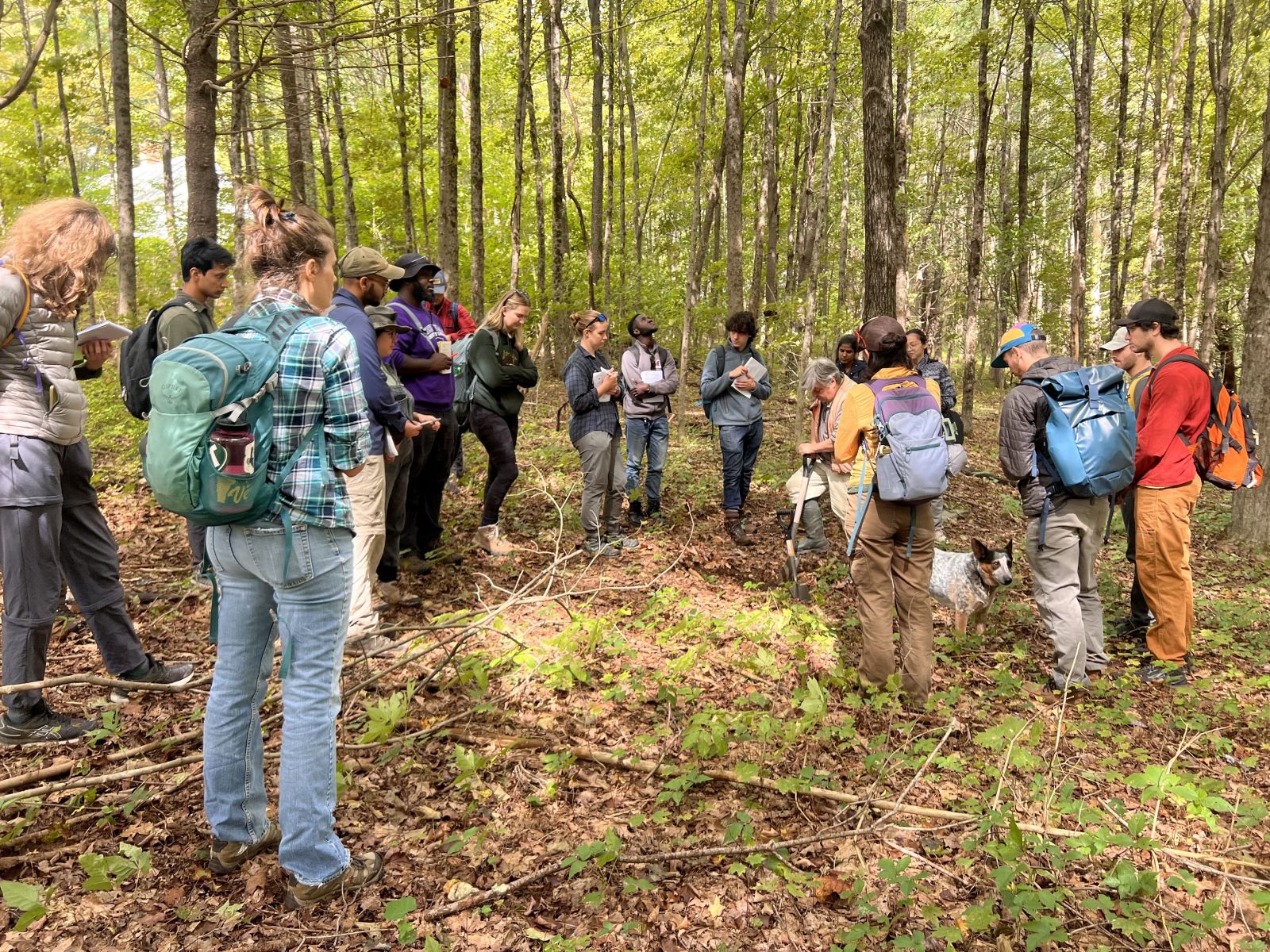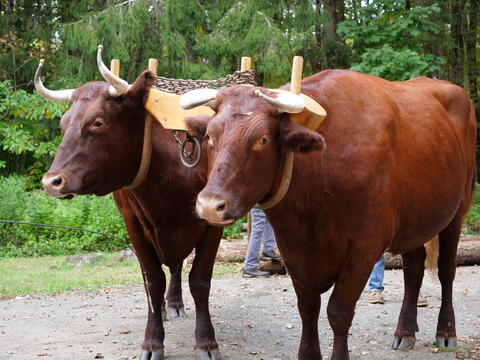
By: Shaylyn Austin ’23 MF, Teaching Fellow, Management Plans for Protected Areas
“Connecticut has the most fascinating geology in the world.” This is a phrase that Marlyse Duguid, Thomas J. Siccama Senior Lecturer in Field Ecology, exclaimed before leading our class up East Rock during my first few weeks at The Forest School at the Yale School of the Environment.
As foresters-in-training at Yale, the forest of East Rock Park is our closest playground. At the time, I didn’t know I would end up doing this same field trip six times during my master’s program. On that first ascent, Duguid was perhaps trying to instill an appreciation for geology in our burgeoning forester minds. To teach us that to make land management decisions today, we must first understand the deep history of that land.
Acknowledging the millions of years that have led to Connecticut’s current landscape puts our role as land managers into perspective. Our time here is brief, but our decisions will affect the land long after we’re gone. It’s a humbling responsibility. And no class prepares us better for that responsibility than Management Plans.
Management Plans is a clinical course in which students write stewardship plans for private landowners neighboring Yale-Myers Forest in northeastern Connecticut. Landowners often implement the land management actions that students recommend. Students’ work leads to real, enduring impacts.
The first lecture of Management Plans is always about geology. Sara Kuebbing, this year’s instructor, asked students to think back 500 million years, to when Proto-North America and Proto-Africa collided. Students learned that the collision zone is the location of present-day Connecticut, and this phenomenon gave rise to the state’s crimpled, ridge-valley topography. About 20,000 years ago, glaciers slid southward, grinding the underlying bedrock. The glaciers then melted, depositing sediment in formations that influence forest communities across the landscape today.
This fall, 18 students applied this geological knowledge to six properties in northeastern Connecticut. They analyzed satellite LiDAR images and walked every inch of the properties to interpret how plate tectonics and glacial movement shaped the land. But this was only the first step.
Rain or shine, students spent many weekends in the woods. They observed land use history clues and collected quantitative ecological data. Most importantly, they spoke to the landowners about their management values and goals. Only then were students ready to integrate past geological forces, present-day ecology, and hopes for the future to inform meaningful land management recommendations.
“Our time here is brief, but our decisions will affect the land long after we’re gone.”
For instance, Franklin Bertellotti ’24 MEM, Tristan Irwin ’24 MF, Hayden Stebbins ’24 MF, and Jie Min Heng ’24 MEM developed a management plan for a 129-acre property in Stafford Springs, CT. The landowners are interested in expanding agroforestry opportunities and engaging community members on their property. To meet both these objectives, the group recommended planting edible, native understory plants with foraging potential, like high bush cranberry and grape. They also suggested several grants the landowners could apply for to help finance their sustainable farming practices, such as the Sustainable Agriculture Farmer Grant.
“The best part of the class is that it has essentially given me a primer on every relevant forest management topic,” Bertellotti said. “My big takeaway is that this line of work is always messier than I expected—every assignment has had a ton of roadblocks ranging from navigating a web of property deeds to tearing up my pants on blackberry bushes. It’s nice to have the opportunity to react to challenges in the field, and certainly a remarkable course that’s far more practically challenging than most at YSE.”
Most of the students in the class won’t practice forestry in Connecticut. Many will return to the places they grew up — California, Bavaria, Sri Lanka, to name a few. That’s the beauty of courses that are grounded in place-based learning. By intimately studying our backyard, we gain the skills to learn about any place, wherever we may go.

Professor Mark Ashton teaches the class how to dig soil pits at Yale-Myers Forest in Eastford, CT on September 15, 2023. Students dig soil pits on their properties to analyze the texture, mineral content, and water availability of the soil’s upper layers. With this information, the students determine which plant species would grow best in that soil type. Most of the soils in northeastern Connecticut are derived from metamorphic rock, a type of rock that formed from the intense heat and pressure generated when proto-North America and proto-Africa collided 500 million years ago. Photo: Shaylyn Austin.




